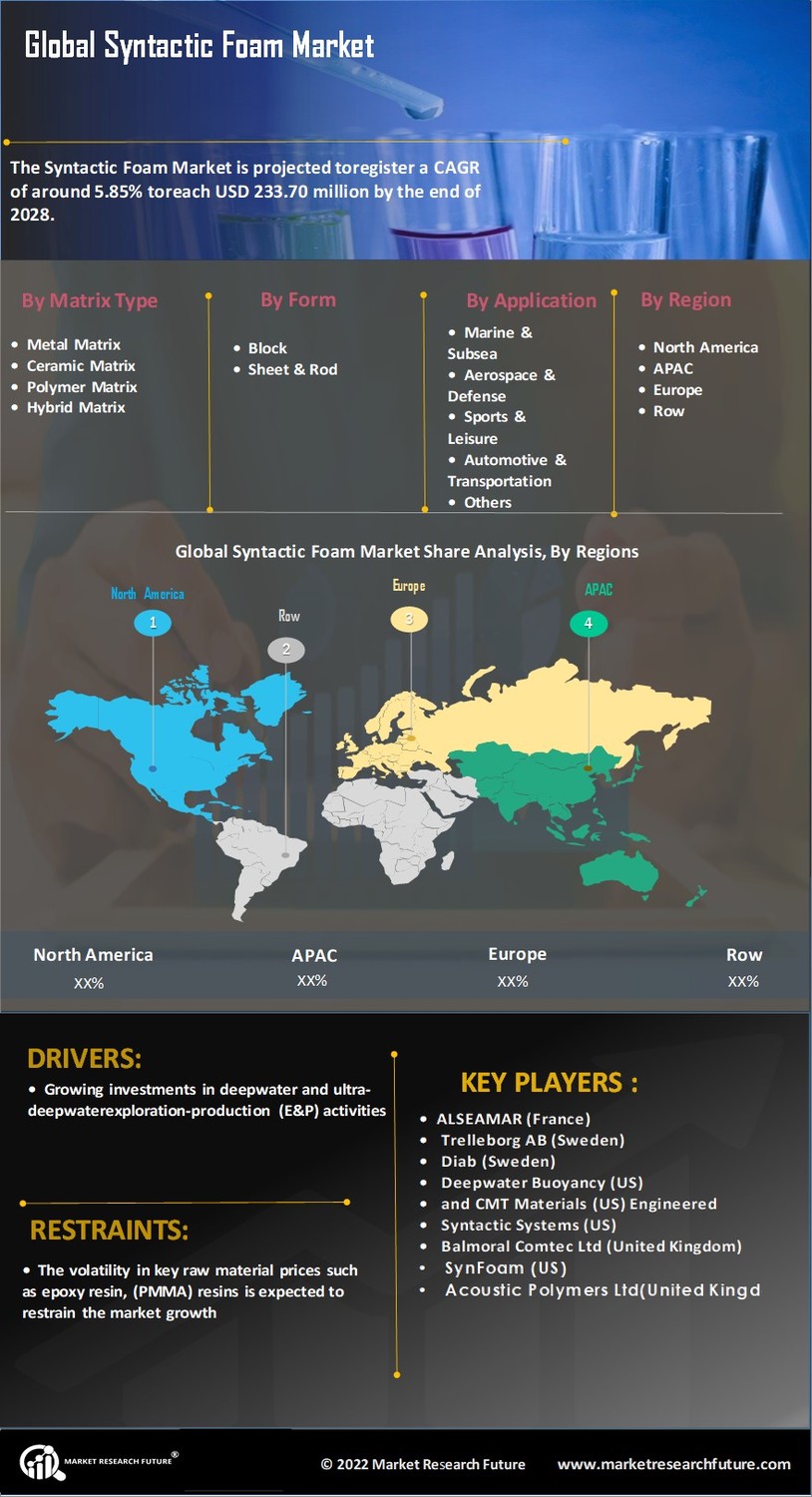Market Growth Projections
The Global Syntactic Foam Market Industry is projected to experience substantial growth over the next decade. With an expected market value of 176.6 USD Million in 2024, the industry is on a trajectory to reach 310.5 USD Million by 2035. This growth is underpinned by a compound annual growth rate of 5.27% from 2025 to 2035, reflecting the increasing adoption of syntactic foams across various sectors. The market dynamics indicate a robust demand driven by technological advancements, environmental considerations, and the need for lightweight materials.
Growth in Aerospace Sector
The Global Syntactic Foam Market Industry is significantly influenced by the aerospace sector, where weight reduction is paramount. Syntactic foams are utilized in aircraft components due to their excellent strength-to-weight ratio and thermal insulation properties. As the aerospace industry evolves, the demand for lightweight materials is projected to increase, contributing to a market valuation of 310.5 USD Million by 2035. The ongoing development of next-generation aircraft, which prioritizes fuel efficiency and reduced emissions, further underscores the potential for syntactic foams to play a critical role in this sector.
Expansion in Renewable Energy Sector
The Global Syntactic Foam Market Industry is poised for growth due to the expansion of the renewable energy sector, particularly in offshore wind energy. Syntactic foams are utilized in buoyancy modules and other components that support offshore wind turbines. As countries invest in renewable energy infrastructure, the demand for materials that can withstand harsh marine environments is likely to rise. This trend aligns with the anticipated market growth, with a projected value of 310.5 USD Million by 2035, highlighting the critical role of syntactic foams in supporting sustainable energy initiatives.
Rising Demand in Marine Applications
The Global Syntactic Foam Market Industry experiences a notable surge in demand driven by its extensive applications in marine environments. Syntactic foam's lightweight and buoyant properties make it ideal for subsea buoyancy systems, which are crucial for offshore oil and gas exploration. As the industry anticipates a market value of 176.6 USD Million in 2024, the increasing focus on deep-sea exploration and underwater robotics is likely to propel growth. Furthermore, advancements in material science are enhancing the performance characteristics of syntactic foams, making them more appealing for marine applications.
Increasing Focus on Lightweight Materials
The Global Syntactic Foam Market Industry is experiencing a paradigm shift towards lightweight materials across multiple sectors, including automotive, aerospace, and marine. The emphasis on reducing overall weight to improve fuel efficiency and performance is driving the adoption of syntactic foams. As industries seek to comply with stringent environmental regulations, the demand for lightweight solutions is likely to escalate. This trend is expected to contribute to the market's growth, with projections indicating a market size of 176.6 USD Million in 2024, reflecting the increasing integration of syntactic foams in various applications.
Technological Advancements in Manufacturing
Technological advancements in the manufacturing processes of syntactic foams are reshaping the Global Syntactic Foam Market Industry. Innovations such as improved mixing techniques and enhanced curing processes are leading to higher quality products with better performance metrics. These advancements not only reduce production costs but also increase the versatility of syntactic foams across various applications, including automotive and construction. As manufacturers adopt these technologies, the market is expected to witness a compound annual growth rate of 5.27% from 2025 to 2035, indicating a robust growth trajectory.

















Leave a Comment